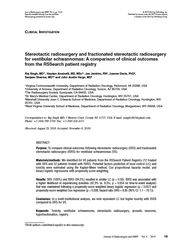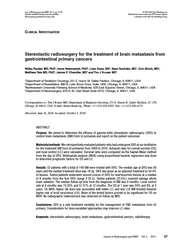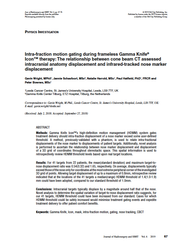- Home
- Journal Contents Downloads
- JRSBRT Downloads
- JRSBRT 6.1, p. 77-79
Product Description
Conventionally fractionated radiotherapy (RT) has been a stalwart radiation-based treatment modality for intracranial meningioma for decades, providing excellent tumor control (1). Although the majority of patients receive conventional photon-based therapy, the physical properties of proton beam make this radiation modality very attractive, leading to a dramatic growth in the number of proton centers across the United States (2). The increasing popularity of protons over the past decade may lead to increased proton utilization in the management of benign conditions, where longterm survival is expected, such as meningioma (3). A recent randomized study of RT from the Massachusetts General Hospital involving an 80%/20% proton/photon ratio during treatment for subtotally resected/ recurrent benign meningioma patients found the risk of stroke was 20.5%, with the average stroke developing 5.6 years after RT completion (4). This high rate is worrisome and puts the safety of external beam radiation therapy in the management of benign meningioma under question. However, before rejecting radiation therapy as a management for benign meningiomas, it is important to determine whether this high rate of stroke is also evident in patients treated with photonbased conventionally fractionated RT. This study was performed to address this void.
Keywords: meningioma, fractionated radiotherapy, long-term stroke risk, proton-photon radiotherapy, photon radiotherapy
After payment has been processed for your order of a digital copy (PDF) of this article, you will see a download link on your completed order page and also receive an email containing a download link. The links, which will enable you to download one copy of the article, will expire after 24 hours.
 Loading... Please wait...
Loading... Please wait...








